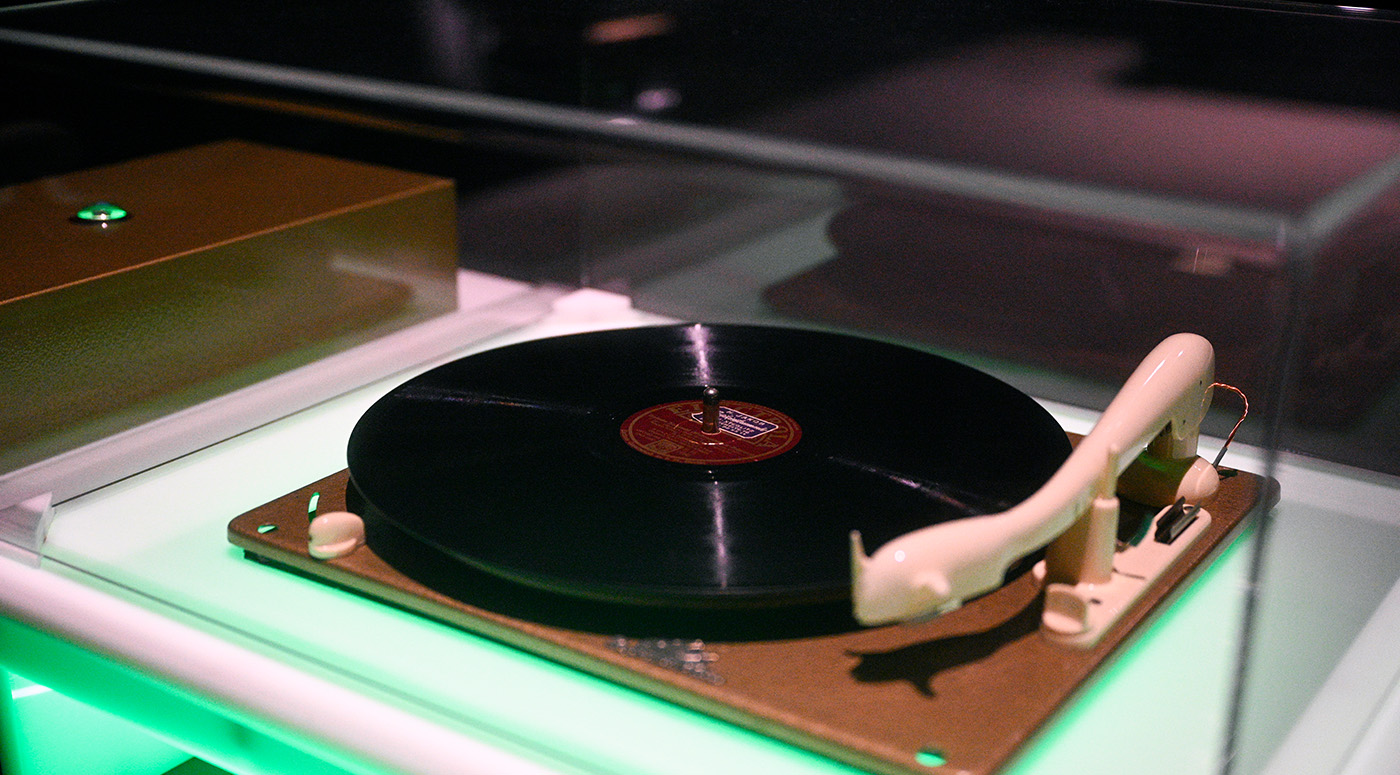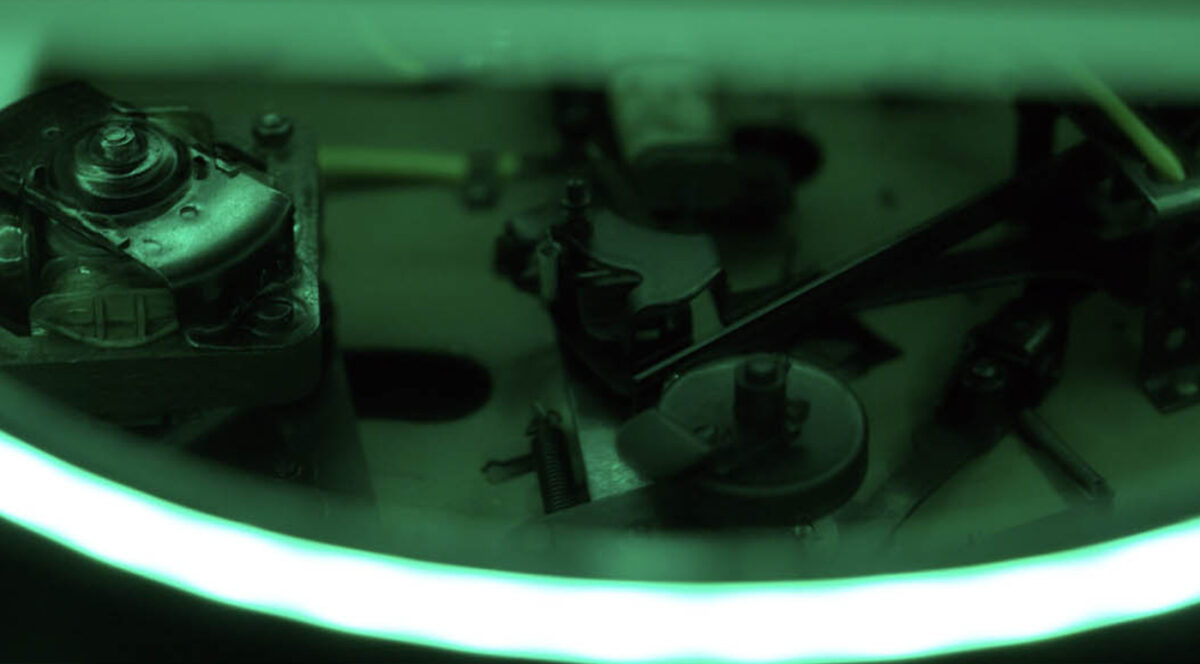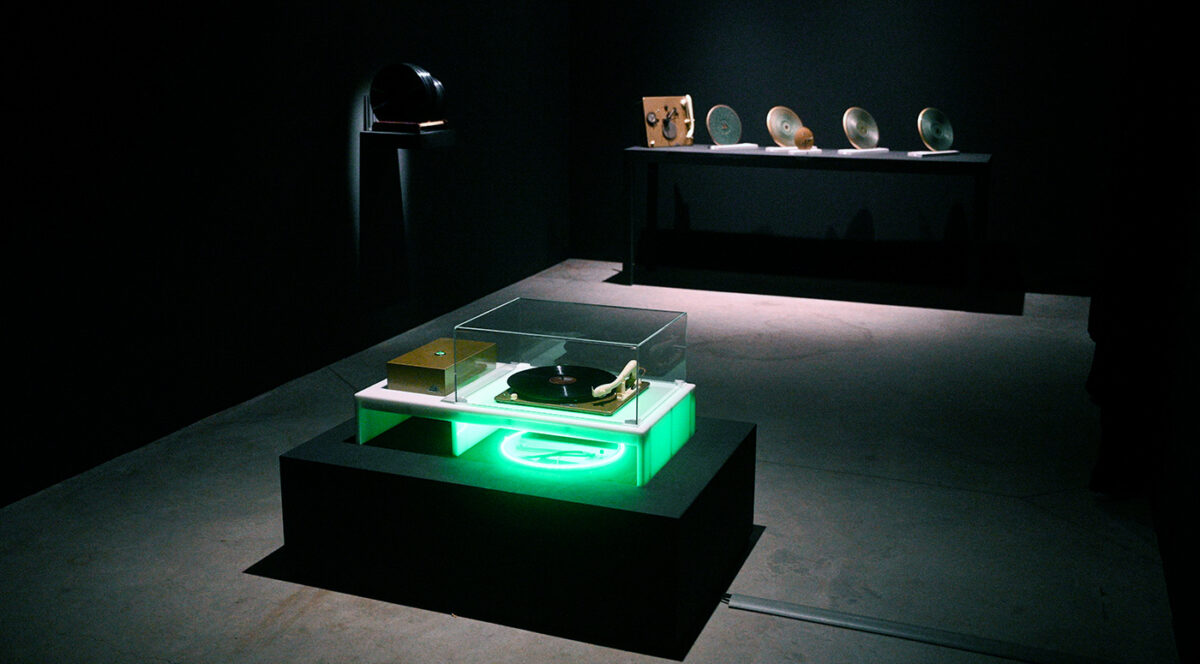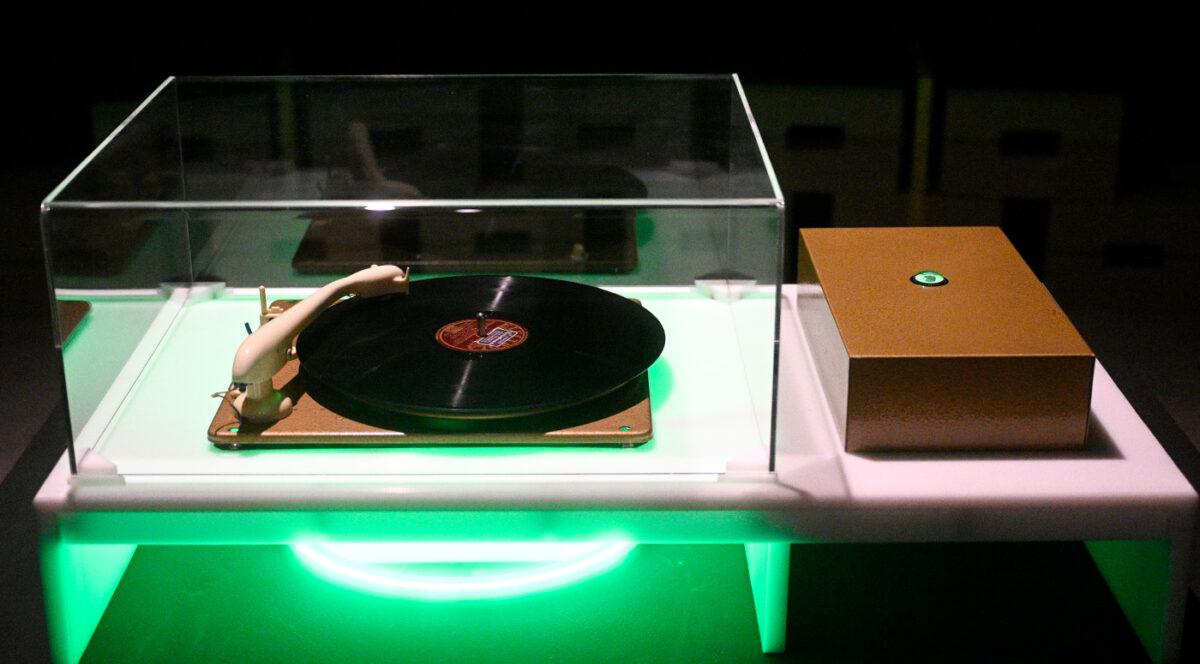The High Fidelity Wasteland trilogy is a series of sound-centric works that wade through generations of decomposing material waste produced by the global music industry.
High Fidelity Wasteland II: The Protoplastic Groove is an immersive sound installation consisting of a 1950s era record player that devolves the audible timescale of music from the past. The work amplifies and inhabits the impurities, noise and biological origins of shellac records – the precursor to vinyl as we know it today. Rather than rapidly spinning classical compositions and nostalgic hits at the standard 78 rpm, this work slows everything down to a mere 16 revolutions per minute and stretches sound into a sombrely encompassing landscape.
The shellac record was the first ever disk-shaped recording medium which allowed people to own, collect and listen to music in the domestic setting. As a material, shellac looks and behaves like any other plastic; however, this dark resin has organic origins. It is bioadhesive matter excreted by the tree dwelling Lac beetle which is used to create a protective shelter for her offspring. Chemically similar to synthetic polymers, shellac is considered a natural form of plastic. And though shellac was rapaciously harvested and commodified throughout the 20th century to make music tangible, the era of the shellac record represents the only (and very short-lived) period where the music recording industry was sustainable.
Initial research for this second work in the High Fidelity Wasteland trilogy was supported by the German Phonograph Museum which was made possible through a residency at Kunstverein Global Forest e.V. in St. Georgen in the Black Forest. The production of this artwork was made possible through the European Media Art Platform / EMARE program at KONTEJNER | bureau of contemporary art praxis. The artist gratefully acknowledges the support of The Canada Council for the Arts for their ongoing support. Special thanks to Daniel Stigler, Irene Pérez Hernández, Studio Alex Rex and Olsen Wolf.
Photos by Romane-Iskaria



